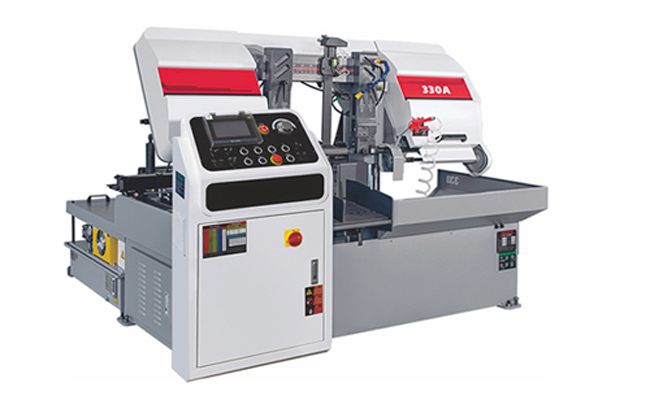BS-1018R Metal Cutting Bandsaw
Cutting Capacity :
Bandsaws are an indispensable tool in woodworking, metalworking, and other manufacturing industries, and vertical bandsaws and horizontal bandsaws are two common design types. They each have their own advantages and disadvantages and are suitable for different work scenarios and needs. This article will compare the two bandsaws in detail to help you choose the tool that is more suitable for your project.

Vertical Bandsaw
Advantages
Suitable for Precision Cutting
The design of the vertical bandsaw makes it particularly suitable for fine cutting and processing of complex shapes, such as curve cutting, carving, and special-shaped cutting.
Space Saving
Vertical bandsaws usually have a small footprint and are suitable for small studios or environments with limited space.
Flexible Operation
Because the workpiece can be moved freely, the vertical bandsaw is more flexible when cutting irregular shapes.
Versatility
By replacing different types of saw blades, the vertical bandsaw can cut a variety of materials such as wood, metal, plastic, etc.
Suitable for Small Workpieces
Vertical bandsaws are particularly suitable for processing small or medium-sized workpieces, such as furniture parts, model making, etc.
Disadvantages
Limited cutting thickness
Vertical band saws usually have a smaller cutting depth and are not suitable for processing very thick materials.
Lower stability
Vertical band saws may not be as stable as horizontal band saws when cutting large or heavy workpieces.
Higher learning curve
Operating a vertical band saw requires certain skills and experience, and beginners may need time to adapt.

Horizontal band saws
Advantages
Suitable for heavy cutting
Horizontal band saws are usually used to cut large or heavy materials, such as thick wood boards, metal pipes or large workpieces.
High stability
The horizontal design makes it more stable during cutting, suitable for long-term continuous work.
High cutting efficiency
The horizontal band saw has a faster cutting speed, which is particularly suitable for mass production or industrial environments.
Suitable for long straight line cutting
Horizontal band saws perform well in long straight line cutting and are common tools on construction sites or metal processing workshops.
Simple operation
The operation of the horizontal band saw is relatively simple, and even beginners can quickly get started.
Disadvantages
Large footprint
Horizontal bandsaws are usually large and take up more space, making them unsuitable for small studios.
Not suitable for curve cutting
Horizontal bandsaws are mainly used for straight-line cutting and cannot complete complex curve cutting.
Less flexibility
Horizontal bandsaws are less flexible when dealing with irregular shapes because the workpiece needs to be fixed on the table.
How to choose the right bandsaw for you?
When to choose a vertical bandsaw:
You need to cut curves or complex shapes.
Your project involves small or medium-sized workpieces.
You have limited workspace.
You pursue high precision and fine cutting effects.
When to choose a horizontal bandsaw:
You need to cut large or heavy materials.
Your project is mainly long straight-line cutting.
You have a large work environment.
You need a high-efficiency mass production tool.
Vertical bandsaws and horizontal bandsaws each have their own advantages and disadvantages, and which tool to choose depends on your specific needs. If your work requires high precision, complex shapes or small workpiece cutting, a vertical band saw is a better choice. If you value efficiency, stability and heavy material cutting capabilities, a horizontal band saw is more suitable for you.
No matter which band saw you choose, be sure to pay attention to safe operation and choose the right saw blade according to the project needs. I hope this article can help you find the most suitable tool to complete your project smoothly!
Cutting Capacity :
Cutting Capacity :